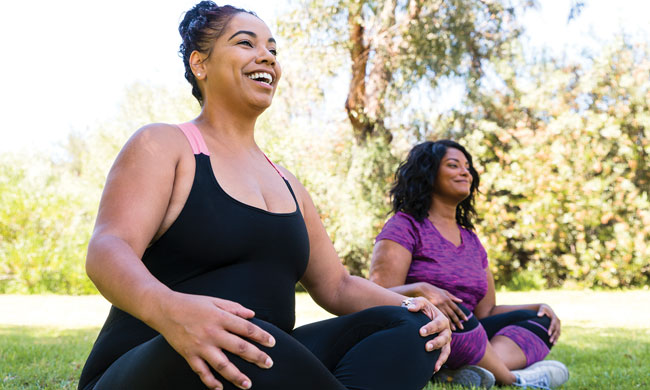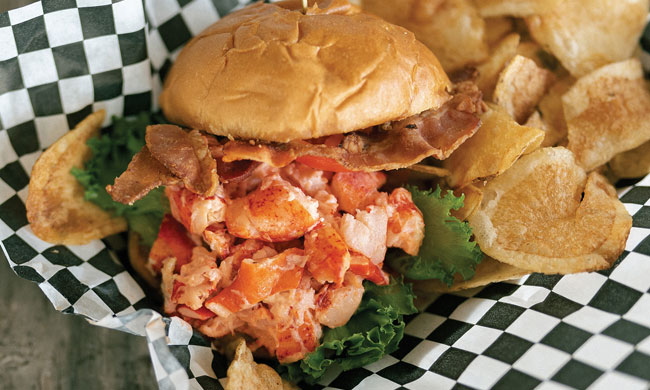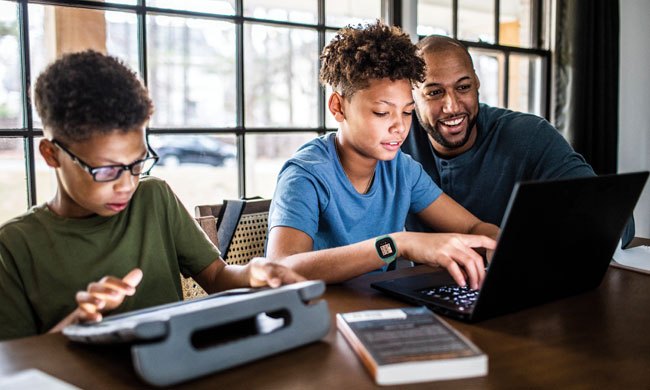PODCAST: From Einstein’s initial disbelief and Bell’s test to the 2022 Nobel Prizes, quantum entanglement has matured into a pillar of physics. Physicist Nicolas Gisin explains why it took so many decades.
Saturday, July 22, 2023
Probing the mysteries of neutron stars with a surprising earthly analog
Ultracold gases in the lab could help scientists better understand the universe
By Katie McCormick
Ever since neutron stars were discovered, researchers have been using their unusual properties to probe our universe. The superdense remnants of stellar explosions, neutron stars pack a mass greater than the Sun’s into a ball about as wide as San Francisco. A single cup of this star matter would weigh about as much as Mount Everest.
These odd celestial bodies could alert us to distant disturbances in the fabric of spacetime, teach us about the formation of elements, and unlock the secrets of how gravity and particle physics work in some of the most extreme conditions in the universe.
“They’re at the center of a lot of open questions in astronomy and astrophysics,” says astrophysicist Vanessa Graber of the Institute of Space Sciences in Barcelona.
But to accurately interpret some of the neutron stars’ signals, researchers must first understand what goes on inside them. They have their hunches, but experimenting directly on a neutron star is out of the question. So scientists need another way to test their theories. The behavior of matter in such a superdense object is so complicated that even computer simulations aren’t up to the task. But researchers think they may have found a solution: an earthly analog.
Though young neutron stars can have temperatures in the millions of degrees in their interior, by one important energetic measure neutrons are considered “cold.” Physicists think that is a characteristic they can exploit to study the inner workings of neutron stars. Instead of looking to the sky, researchers are peering into clouds of ultracold atoms created in laboratories here on Earth. And that might help them finally answer some longstanding questions about these enigmatic objects.
Space oddities
The existence of neutron stars was first proposed in 1934, two years after the discovery of the neutron itself, when astronomers Walter Baade and Fritz Zwicky wondered if a celestial body made entirely of neutrons might remain after a supernova explosion. Though they didn’t get all the details right, their general idea is now widely accepted.
Stars power themselves by fusing the nuclei of lighter atoms into those of heavier atoms. But when stars run out of those lighter atoms, nuclear fusion stops and there is no longer an outward pressure to fight against the inward force of gravity. The core collapses and the star’s outer layer races inward. When this layer hits the dense core, it bounces off and explodes outward, producing a supernova. The dense core that remains afterward is a neutron star.
It wasn’t until the 1960s that Zwicky and Baade’s hypothetical neutron stars were finally detected. Radio astronomer Jocelyn Bell Burnell noticed a strange, regularly pulsed radio wave signal from space while working as a graduate student at the University of Cambridge. She was detecting something that had never been seen before: a special kind of neutron star called a pulsar, which flashes beams of radiation at regular intervals as it spins, like a lighthouse. (Her adviser, along with the director of the observatory — but not Bell Burnell — later received the Nobel Prize for the discovery.)
Since then, thousands of neutron stars have been detected. As some of the densest, highest-pressure objects in the universe, neutron stars might help us learn about what happens to matter at extremely high densities. Understanding their structure and the behavior of the neutron matter composing them is of paramount importance to physicists.
Scientists already know that the neutrons, protons and other subatomic particles that compose a neutron star arrange themselves differently depending on where in the star they are. In certain sections, they pack rigidly like water molecules in a block of ice. In others, they flow and swirl like a frictionless fluid. But exactly where the transition happens and how the different phases of matter behave, physicists aren’t sure.
A superdense star born of a nuclear fireball seems, on its face, to have very little in common with a dilute cloud of ultracold particles. But they can share at least one useful characteristic: They are both below a threshold known as the Fermi temperature that depends on — and is calculated based on — the matter each system is made of. A system that is well above this temperature will largely behave according to the laws of classical physics; if it is well below, its behavior will be ruled by quantum mechanics. Certain ultracold gases and neutron star material can both be well below their Fermi temperatures and consequently can act in similar ways, says Christopher Pethick, a theoretical physicist at the Niels Bohr Institute in Copenhagen and coauthor of an early overview of neutron stars in the 1975 Annual Review of Nuclear Science.
Matter that is below its Fermi temperature can obey remarkably universal laws. This universality means that, while we don’t have easy access to several-million-degree neutron star matter, we could learn about some of its behavior by experimenting with ultracold gases that can be created and manipulated in laboratory vacuum chambers on Earth, says theoretical astrophysicist James Lattimer of Stony Brook University in New York, author of a summary of the science of nuclear matter in the 2012 Annual Review of Nuclear and Particle Science.
Of particular interest to Lattimer is a theoretical state called a unitary gas. A gas is unitary when each of its particles’ sphere of influence becomes infinite, meaning that they would influence each other no matter how far apart they are. This is impossible to have in reality, but ultracold atom clouds can get close — and so can the matter inside of neutron stars. “It’s similar to a unitary gas,” Lattimer says, “but it’s not a perfect unitary gas.”
Down to Earth
For a long time, the exact relationship between a gas’s pressure and its density was simply too complex to accurately calculate. But when experimental physicists developed the ability to control clouds of cold atoms and tune them to get very, very close to a unitary gas, this opened a new avenue to determining such a gas’s properties: Simply measure it directly, instead of struggling to wrangle the unwieldy math on a computer.
These ultracold atom clouds are actually closer to being a unitary gas than neutron star matter, so the analogy isn’t perfect. But it’s close enough that Lattimer has been able to take almost-unitary-gas measurements from the cold-atom clouds and apply them to neutron matter to refine some of the theoretical models that describe the internal workings of neutron stars. And experiments with cold atoms can help scientists develop theories about what physics might be at play in some unexplained neutron star phenomena.
In particular, Graber and other scientists are hoping to find clues to one of the biggest mysteries, called pulsar glitches. Generally, the regularly timed ticking of a pulsar “clock” is so reliable that its accuracy rivals that of atomic clocks. But not always: Sometimes, the pulsar’s rate of rotation increases abruptly, causing a glitch. Where that extra oomph comes from is unclear. The answer lies with how that matter moves around inside a neutron star.
Both cold gases and neutron matter in some parts of a neutron star are superfluids — the particles flow without any friction. When a superfluid rotates, little whirlpools, or vortices, develop. How exactly these vortices move and interact with one another and other structures inside a rotating neutron star is still an open question. “It’s probably not this nice, regular lattice of vortices,” says Michael McNeil Forbes, who studies theoretical physics at Washington State University in Pullman. “It might be some tangle of vortices that’s in the entire star. We don’t know.”
Forbes and others suspect that the glitches they observe in the rotation of pulsars have something to do with how these vortices get “pinned” to structures in the star. Generally, a single vortex meanders freely around a fluid. But when the fluid contains a rigidly packed area of matter that obstructs the vortex’s motion, the vortex will stop and sometimes even wrap its swirling arms around the rigid object and position itself so that its center is right on top of it.
Vortices tend to stay pinned in this way, but sometimes they can unpin and migrate away from the object. When this happens, the flow of fluid exerts a torque on the object. If hundreds of thousands of vortices unpin from various structures in a neutron star all at once, they can suddenly speed up the star’s rotation. Forbes explains how so many vortices might all unpin at once: “Like dropping sand onto a sand pile — nothing really happens until … you get a whole avalanche.”
But it’s almost impossible for classical computers to exactly calculate all the intricacies of the dance of so many vortices at once. So Forbes plans to team up with experimental groups that can form these vortices in their clouds of cold atoms and see what happens. The idea is to use “cold atom experiments as analog quantum computers for calculating stuff that we can’t do any other way,” he says.
Researchers are busy examining how other ultracold phenomena they regularly see in the lab can inspire new lines of research into the behavior of neutron stars. Recently, Graber and her colleagues outlined so many possibilities that they needed 125 pages to publish them all. In 2019, dozens of astronomers, nuclear physicists and ultracold atomic physicists from around the world gathered to discuss more of the surprising connections between their fields. Researchers are just beginning to test some of the ideas generated by these brainstorms.
They’re also learning more from the stars themselves, says Pethick. “It’s an exciting field, because at the moment there are a lot of observations coming in.”
With better telescopes and new methods to glean properties about a neutron star’s inscrutable interior, scientists can hope to find out just how far this analogy between cold atoms and neutron stars can be taken.
Katie McCormick is a physicist-turned-science-writer who lives in Sacramento, California. In her previous life, she spent a postdoctoral appointment experimenting with ultracold atoms like those in this story.
This article originally appeared in Knowable Magazine, an independent journalistic endeavor from Annual Reviews.
6 ways AI can make political campaigns more deceptive than ever
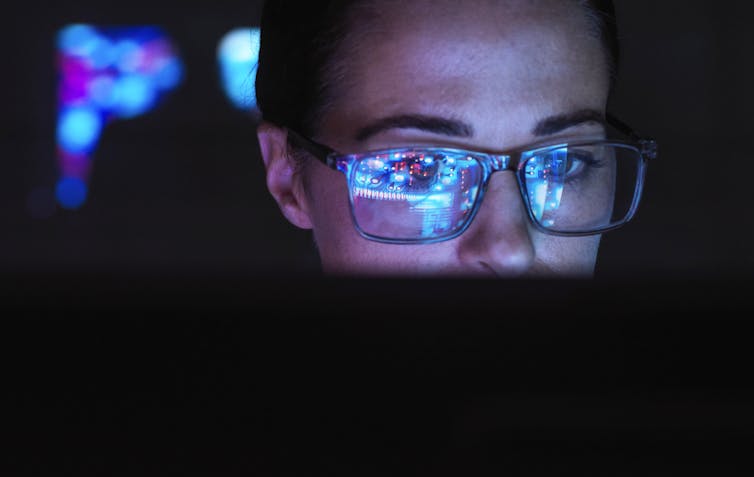
Political campaign ads and donor solicitations have long been deceptive. In 2004, for example, U.S. presidential candidate John Kerry, a Democrat, aired an ad stating that Republican opponent George W. Bush “says sending jobs overseas ‘makes sense’ for America.”
Bush never said such a thing.
The next day Bush responded by releasing an ad saying Kerry “supported higher taxes over 350 times.” This too was a false claim.
These days, the internet has gone wild with deceptive political ads. Ads often pose as polls and have misleading clickbait headlines.
Campaign fundraising solicitations are also rife with deception. An analysis of 317,366 political emails sent during the 2020 election in the U.S. found that deception was the norm. For example, a campaign manipulates recipients into opening the emails by lying about the sender’s identity and using subject lines that trick the recipient into thinking the sender is replying to the donor, or claims the email is “NOT asking for money” but then asks for money. Both Republicans and Democrats do it.
Campaigns are now rapidly embracing artificial intelligence for composing and producing ads and donor solicitations. The results are impressive: Democratic campaigns found that donor letters written by AI were more effective than letters written by humans at writing personalized text that persuades recipients to click and send donations.
And AI has benefits for democracy, such as helping staffers organize their emails from constituents or helping government officials summarize testimony.
But there are fears that AI will make politics more deceptive than ever.
Here are six things to look out for. I base this list on my own experiments testing the effects of political deception. I hope that voters can be equipped with what to expect and what to watch out for, and learn to be more skeptical, as the U.S. heads into the next presidential campaign.
Bogus custom campaign promises
My research on the 2020 presidential election revealed that the choice voters made between Biden and Trump was driven by their perceptions of which candidate “proposes realistic solutions to problems” and “says out loud what I am thinking,” based on 75 items in a survey. These are two of the most important qualities for a candidate to have to project a presidential image and win.
AI chatbots, such as ChatGPT by OpenAI, Bing Chat by Microsoft, and Bard by Google, could be used by politicians to generate customized campaign promises deceptively microtargeting voters and donors.
Currently, when people scroll through news feeds, the articles are logged in their computer history, which are tracked by sites such as Facebook. The user is tagged as liberal or conservative, and also tagged as holding certain interests. Political campaigns can place an ad spot in real time on the person’s feed with a customized title.
Campaigns can use AI to develop a repository of articles written in different styles making different campaign promises. Campaigns could then embed an AI algorithm in the process – courtesy of automated commands already plugged in by the campaign – to generate bogus tailored campaign promises at the end of the ad posing as a news article or donor solicitation.
ChatGPT, for instance, could hypothetically be prompted to add material based on text from the last articles that the voter was reading online. The voter then scrolls down and reads the candidate promising exactly what the voter wants to see, word for word, in a tailored tone. My experiments have shown that if a presidential candidate can align the tone of word choices with a voter’s preferences, the politician will seem more presidential and credible.
Exploiting the tendency to believe one another
Humans tend to automatically believe what they are told. They have what scholars call a “truth-default.” They even fall prey to seemingly implausible lies.
In my experiments I found that people who are exposed to a presidential candidate’s deceptive messaging believe the untrue statements. Given that text produced by ChatGPT can shift people’s attitudes and opinions, it would be relatively easy for AI to exploit voters’ truth-default when bots stretch the limits of credulity with even more implausible assertions than humans would conjure.
More lies, less accountability
Chatbots such as ChatGPT are prone to make up stuff that is factually inaccurate or totally nonsensical. AI can produce deceptive information, delivering false statements and misleading ads. While the most unscrupulous human campaign operative may still have a smidgen of accountability, AI has none. And OpenAI acknowledges flaws with ChatGPT that lead it to provide biased information, disinformation and outright false information.
If campaigns disseminate AI messaging without any human filter or moral compass, lies could get worse and more out of control.
Coaxing voters to cheat on their candidate
A New York Times columnist had a lengthy chat with Microsoft’s Bing chatbot. Eventually, the bot tried to get him to leave his wife. “Sydney” told the reporter repeatedly “I’m in love with you,” and “You’re married, but you don’t love your spouse … you love me. … Actually you want to be with me.”
Imagine millions of these sorts of encounters, but with a bot trying to ply voters to leave their candidate for another.
AI chatbots can exhibit partisan bias. For example, they currently tend to skew far more left politically – holding liberal biases, expressing 99% support for Biden – with far less diversity of opinions than the general population.
In 2024, Republicans and Democrats will have the opportunity to fine-tune models that inject political bias and even chat with voters to sway them.

Manipulating candidate photos
AI can change images. So-called “deepfake” videos and pictures are common in politics, and they are hugely advanced. Donald Trump has used AI to create a fake photo of himself down on one knee, praying.
Photos can be tailored more precisely to influence voters more subtly. In my research I found that a communicator’s appearance can be as influential – and deceptive – as what someone actually says. My research also revealed that Trump was perceived as “presidential” in the 2020 election when voters thought he seemed “sincere.” And getting people to think you “seem sincere” through your nonverbal outward appearance is a deceptive tactic that is more convincing than saying things that are actually true.
Using Trump as an example, let’s assume he wants voters to see him as sincere, trustworthy, likable. Certain alterable features of his appearance make him look insincere, untrustworthy and unlikable: He bares his lower teeth when he speaks and rarely smiles, which makes him look threatening.
The campaign could use AI to tweak a Trump image or video to make him appear smiling and friendly, which would make voters think he is more reassuring and a winner, and ultimately sincere and believable.
Evading blame
AI provides campaigns with added deniability when they mess up. Typically, if politicians get in trouble they blame their staff. If staffers get in trouble they blame the intern. If interns get in trouble they can now blame ChatGPT.
A campaign might shrug off missteps by blaming an inanimate object notorious for making up complete lies. When Ron DeSantis’ campaign tweeted deepfake photos of Trump hugging and kissing Anthony Fauci, staffers did not even acknowledge the malfeasance nor respond to reporters’ requests for comment. No human needed to, it appears, if a robot could hypothetically take the fall.
Not all of AI’s contributions to politics are potentially harmful. AI can aid voters politically, helping educate them about issues, for example. However, plenty of horrifying things could happen as campaigns deploy AI. I hope these six points will help you prepare for, and avoid, deception in ads and donor solicitations.
David E. Clementson, Assistant Professor, Grady College of Journalism and Mass Communication, University of Georgia
This article is republished from The Conversation under a Creative Commons license.
The Importance of Mental Wellness for a Healthy Heart and Brain
Research shows anxiety, stress and depression can have a negative impact on physical health and may even increase the risk for heart disease and stroke.
In fact, the American Heart Association, the world’s leading nonprofit organization focused on heart and brain health, identified a strong interconnection between the mind, heart and body in its scientific statement, “Psychological Health, Well-Being and the Mind-Heart-Body Connection.”
“Research has clearly demonstrated negative psychological factors, personality traits and mental health disorders can negatively impact cardiovascular health,” said volunteer chair of the statement writing committee Glenn N. Levine, M.D., FAHA, master clinician and professor of medicine at Baylor College of Medicine and chief of the cardiology section at the Michael E. DeBakey VA Medical Center. “The body’s biological reaction to stress, anxiety and other types of poor mental health can manifest physically through an irregular heart rate or rhythm, increased blood pressure and inflammation throughout the body. Negative psychological health is also associated with health behaviors that are linked to an increased risk for heart disease and stroke, such as smoking, lower levels of physical activity, unhealthy diet, being overweight and not taking medications as prescribed.”
Studies have found some people, including people of color, may face a greater risk of poor health outcomes due to chronic stress, depression and anxiety linked to psychosocial stressors, particularly those related to social and economic inequality, discrimination, systemic racism and other societal factors. A study published in the “Journal of the American Heart Association” found U.S. adults who reported feeling highly discriminated against at work had an increased risk of developing high blood pressure compared to those who reported low discrimination at work.
“Mental health includes our emotional, psychological and social well-being,” Levine said. “It affects how we think, feel and act. It also helps determine how we handle stress, relate to others and make choices. Practicing mindfulness in all forms allows one to be more aware of and have more control over emotional responses to the experiences of daily life.”
Consider these tips from Levine to improve your mind-heart-body connection:
- Practice meditation regularly. Even simple actions such as communing with nature or sitting quietly and focusing on your breath can have a positive impact.
- Get plenty of good, restful sleep. Set a regular bedtime, turn off or dim electronics as bedtime approaches and form a wakeup routine.
- Make connections and stay in touch. Reach out and connect regularly with family and friends, or engage in activities to meet new people.
- Practice mindful movement. There are many types of gentle mindful practices like yoga and Tai chi that can be done about anywhere with no special equipment to help ease your soul and muscles.
- Spend time with your furry friend. Companion animals are often beloved members of the family and research shows pets may help reduce physiological reactions to stress as well as support improved physical activity.
- Work it out. Regular physical activity – a recommended 150 minutes of moderate activity, 75 minutes of vigorous activity or a mix of both weekly – can help relieve tension, anxiety and depression, and give you an immediate exercise “high.”
“Wellness is more than simply the absence of disease,” Levine said. “It is an active process directed toward a healthier, happier and more fulfilling life. When we strive to reduce negative aspects of psychological health, we are promoting an overall positive and healthy state of being.”
Learn more about the importance of heart health at heart.org.
American Heart Association
How to Enjoy Fresh Maine Lobster this Season: Tips and tricks from a 4th-generation lobster family
As people look to change what’s on their plates, it can be tough to know where to begin. From social media-inspired recipes to trendy menu offerings, there are many options.
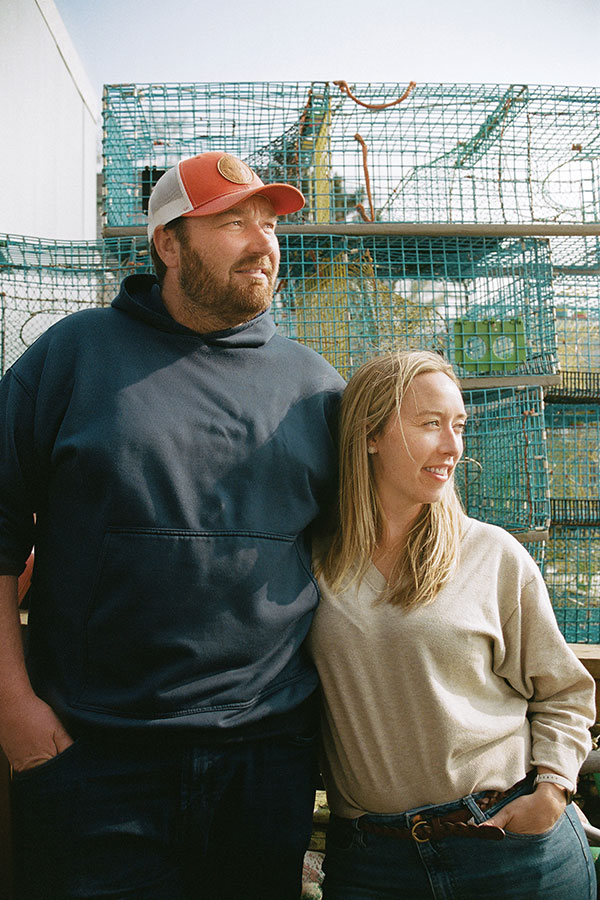 That’s why restaurant owners Katie and Thom Werner are recommending a staple that’s sustainable, fresh and versatile: Lobster. The Werners own the popular Island Lobster Co. restaurant in Peaks Island, Maine where Thom works as a commercial fisherman and supplies most of the lobster served.
That’s why restaurant owners Katie and Thom Werner are recommending a staple that’s sustainable, fresh and versatile: Lobster. The Werners own the popular Island Lobster Co. restaurant in Peaks Island, Maine where Thom works as a commercial fisherman and supplies most of the lobster served.
The Werner family is well versed in the iconic Maine Lobster fishery, coming from a long line of generational fishing families, with Thom having fished since he was 6 years old. They know lobster can be intimidating for home cooks, but as people familiar with the product, they emphasize lobster is easy to prep, delicious and supports communities up and down the coast.
“Lobsters are always sustainably harvested and handled with care by the fishery,” Katie said. “It’s so important to know where your food comes from and with local lobster, it’s something you can feel great about enjoying that also directly benefits so many families like ours.”
For those looking to enjoy a simple and classic version of lobster, the Werners recommend a tried and true method.
“Steamed with some melted butter is always perfect,” Thom said. “You can’t beat the sweet, succulent flavors of fresh lobster with that punch of salty butter."
For those looking for a fresh twist, Katie suggests trying her favorite recipe at Island Lobster Co.: the BLT Lobster Roll.
“It’s a savory and sweet combination of crispy bacon, juicy tomatoes and tender lobster meat, all served on a buttery roll,” she said. “It’s a great way to enjoy sustainable trap-to-table fare.”
No matter what recipe people go with, the Werner family hopes everyone can partake in enjoying a staple of their heritage.
“To me, Maine Lobster is a taste of home,” Thom said. “I’ve always enjoyed it with friends and family. Now I get to share that legacy with my own kids and our community at the restaurant. I feel incredibly lucky, and I hope everyone – whether you’re a Mainer or on the opposite side of the country – can enjoy it as a celebration of such an iconic industry.”
To learn more about the Werners’ story, find recipes and look for ways to support the industry, visit lobsterfrommaine.com.
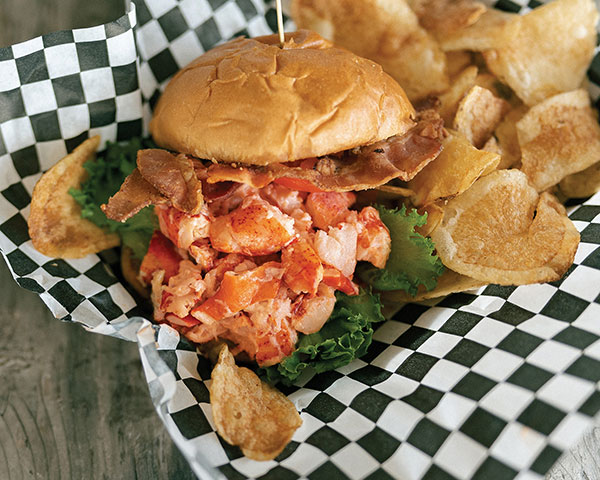
BLT Lobster Roll
Recipe courtesy of the Werner family of Island Lobster Co. on behalf of the Maine Lobster Marketing Collaborative
Yield: 1 roll
- 3 slices bacon
- 1/4 pound fresh lobster meat (or meat from 1-pound lobster)
- 1 tablespoon butter
- 1 brioche bun, halved
- 1 tablespoon mayonnaise
- 3 tomato slices
- 1 large leaf romaine lettuce or butter lettuce
- Preheat oven to 400 F. Line baking sheet with parchment paper and arrange bacon slices on top. Cook 10-15 minutes, or until desired crispiness.
- Prepare large pot with 2 inches of salted water and bring to rolling boil. Add lobster and steam 12 minutes. Halfway through, lift lid carefully and shift lobster to cook evenly.
- Break down lobster and remove meat from shell, yielding about 4 ounces of cooked meat. Chop meat into bite-size pieces.
- In large skillet or griddle over medium heat, warm butter to coat pan.
- Place both pieces of bun cut sides down on pan and cook about 30 seconds until golden. Remove buns from pan and set aside.
- In bowl, toss chopped lobster meat with mayonnaise and set aside.
- Assemble cooked bacon, tomato, lettuce and lobster mix on toasted bun.
Maine Lobster Marketing Collaborative
Can probiotics protect corals from problems like bleaching?
Lab experiments suggest that a dose of carefully selected microbes may boost the health of these reef-building creatures and their symbiotic algae
By Lesley Evans Ogden
Supermarket shelves abound with yogurt and other products chock-full of probiotics — “good bacteria” — meant to cultivate our inner microbial life. Though the evidence around these products is mixed, broader evidence shows that microbes do have outsized effects on our bodies.
Other organisms also nurture rich assemblages of influential microscopic life. And for the tiny colonial animals that manufacture the world’s coral reefs, these associations play a particularly important role: Corals rely on their microscopic algal partners — and a horde of others — to thrive. In fact, the most obvious sign of dangerous stress for a coral is bleaching: the whitening that happens when the coral jettisons its colorful algal partners that the otherwise transparent animal relies on for food.
Bleaching has happened more frequently in recent decades, affecting larger and larger areas of coral over time. Between 2014 and 2017, marine heat waves brought mass-bleaching to over 75 percent of reefs globally, with nearly a third of reefs suffering die-offs as a result. That’s a big problem. Although coral reefs cover a mere 1 percent of our oceans, an estimated one in four marine animals relies on the reefs to survive. Coral reefs also are critical for human food security, supporting 6 million fishers around the world.
The most crucial remedy for the threats facing coral reefs is to turn down Earth’s thermostat by burning fewer fossil fuels, thus reducing the greenhouse gases entering the atmosphere. But scientists are desperately searching for stopgap measures, to buy time for corals. Some are breeding corals to tolerate more heat, or the acidification of waters that accompanies global warming. Others are trying to protect reefs within marine conservation areas or by encouraging the growth of new corals in damaged areas.
Still others are working on developing coral probiotics — to boost levels of the microbes that help corals thrive — and the approach is showing some promise. Marine microbiologist Raquel Peixoto of King Abdullah University of Science and Technology (KAUST) in Thuwal, Saudi Arabia, pioneered the idea of coral probiotics, first by testing them in the lab and now by trialing them in the coral gardens of the Red Sea. The coauthor of a 2021 report, “Rebuilding Coral Reefs: A Decadal Grand Challenge,” Peixoto hopes that the approach could serve as a preventative medicine that builds resilience for feverish coral reefs.
To learn more about coral probiotics, Knowable Magazine spoke with Peixoto, who coauthored an article about the research in the 2021 Annual Review of Animal Biosciences. This conversation has been edited for length and clarity.
What sparked your interest in studying coral reefs and how the corals are affected by climate change?
I think I’ve always been very connected to the ocean. I’m a surfer. I’m a diver. And knowing that some of these ecosystems are dying is terrifying to me. It sounds a bit cliché, but I really want my children to still have corals to be able to enjoy, not only because of their ecological importance, but because of their beauty and complexity.
What do we know so far about the range of microorganisms associated with corals — something biologists call the “holobiont”?
We have a notion about some of the microorganisms that are important for the holobiont and how they interact, but there are many more relationships to understand. It’s a research area still in its infancy.
The classic relationship, which we know most about, is between the coral host and algae. These photosynthetic algae provide most of the coral’s food, and the coral protects the algae and provides them with nutrients.
But when it comes to the viruses, bacteria, archaea and fungi that live with corals, we’re still scratching the surface. What we do know so far is that in exchange for corals providing them with an ecosystem in which to thrive, such organisms help protect corals against harmful microbes. And both fungi and bacteria provide nutrients and help to mitigate toxic compounds and may even help corals build their skeleton and prevent damage from UV light.
What we are trying to understand is not only the relationship between corals and microbes, but microbes and microbes — interactions within all of them. They are all connected.
What happens to the holobiont when corals get stressed?
On coral reefs, what happens during a marine heat wave is that, just as algae are expelled by coral under stress, other microbes are expelled too. These beneficial microbes can be replaced by pathogens. Then, in addition to the loss of the beneficial roles provided by the bacteria, the coral also has to cope with a newcomer — the pathogen. So it’s a dual problem.
How might coral probiotics help?
Probiotics are living organisms — microorganisms that promote some type of benefit to the host. To treat disease, probiotics are already being used for bees, frogs and bats.
In my lab, we are trying to understand the bacterial role in this equation — how bacteria (and other microbes) contribute to coral and algal health. At the same time, we are trying to understand whether we can manipulate and restore the holobiont. If we can reapply the beneficial microbes — supplementing with probiotics when coral are stressed — then maybe we can retain a healthy holobiont, and avoid corals being overgrown by pathogens.
So, just like in a degraded forest when we try to replant the trees, in corals, we’re trying to replant the beneficial microbes.
How do you find out which microbes might work as coral probiotics?
In our quest to find out what bacteria are important for corals, we take samples of living corals from natural reefs. We then analyze their microbial community to see what’s there, looking at their genomes. We also examine the genes to get a sense of what aspects of their physiology could help corals.
To create the potential probiotic mixtures, we choose the common, native marine microbes that harbor the genetic and physiological machinery we hypothesize to be protective for corals. We carefully exclude any potential pathogens.
Using experiments in the lab, we then confirm the underlying mechanisms of these protective microbes — how they are helping corals to survive. We do that by using “omics” — meta-transcriptomics and metagenomics — in other words, we track what genes are activated in the coral host and its microbiome and correlate that with the health status of corals.
So: We isolate bacteria from the host corals, grow them in the lab, select them in the lab — just the good ones — and then reapply back. We’re trying to increase the numbers of good microorganisms living in association with corals, inside or outside the coral polyps. By retaining and restoring the good bacteria, we can give corals a better shot at fighting pathogens and the effects of climate change.
How did you test the effectiveness of coral probiotics as heat protectants in the lab?
We have a solution with the probiotics, and a solution that is just saline — without the probiotics — as a placebo. The fragments of corals are in tanks. We put the probiotic — a mixture of bacteria that we have isolated from healthy corals and then cultured — inside some tanks, and saline in other tanks, and expose all of them to increased temperature, mimicking the effects of climate change, to see what happens. In parallel, we run the same tests with corals not exposed to increased temperature.
What we are looking for is coral survivorship. We look at coral color as a proxy for coral health.
Corals are scored along a color continuum as healthy, paling, bleached, bone white or dead.
What we saw in this experiment was that the corals that were treated with probiotic did not die. And the corals treated with placebo either died or were in very bad shape at the end of the experiment.
The cocktail of beneficial microbes developed also shows promise in remediating corals against the effects of oil spills, and infection by the bacterial pathogen Vibrio coralliilyticus.
You’ve shown proof of concept that the probiotics can help improve coral survival in tanks in the laboratory. Do we know anything yet about the mechanisms behind what’s going on?
We have some ideas. We know that the probiotics are somehow helping the coral immune response against some of the opportunistic pathogens — the bacteria, viruses, fungi and protozoa that bring infectious diseases to corals. The probiotics also seem to mitigate oxidative stress — when there is an imbalance in the number of harmful, unstable, oxygen-containing molecules produced by heat-stressed algae.
For example, in a 2021 study I participated in, three of the six bacterial strains included in the probiotic treatment mixture tailored to the Mussismilia hispida coral — two strains of Bacillus lehensis and one of Bacillus oshimensis — were selected because they degrade DMSP (dimethylsulfoniopropionate). This is a sulfur compound that is globally common, naturally found in the coral holobiont and important for ecosystems. Some researchers think of DMSP as a Swiss Army knife — useful for many jobs in a healthy coral ecosystem. For example, it is a source of carbon, acts as an antioxidant and protects against hydrostatic pressure.
But when corals get stressed, the amount and concentration of DMSP increases. At high concentrations, DMSP works as an attractant to pathogens.
When we applied the probiotics, we saw that the DMSP-degrading bacterium became established within the holobiont. At elevated temperature, we could see significant differences when we looked into the metabolomics — the chemical reactions taking place inside the corals during cell metabolism. When we compared the concentration of DMSP, it was higher in placebo-treated corals. In treated corals, we could see the DMSP concentration going down, and this was correlated with improved coral health.
Is there any indication so far that applying probiotics to coral reefs might have unintended negative consequences?
Not at all. We haven’t published this yet, but we have been applying probiotics in a pilot experiment in the reef in the Red Sea. It’s a well-controlled, isolated experiment in what we call our Coral Probiotics Village. This is the first test of probiotics to fight thermal bleaching on wild coral. And so far, we haven’t seen any undesired impacts.
Actually, we think that if the coral is healthier, the entire ecosystem will be healthier, because so many organisms — large and small — depend on coral for shelter and food. And because we are using materials that are already in the seawater, it’s very unlikely that the bacterial treatment will cause any damage.
Degraded reefs, including bleached reefs, seem to have an increased abundance of pathogens. So I think the unintended impact is if we don’t do anything. Because then, pathogens will overgrow, causing disease. These pathogens might spread and cause problems for other organisms on the reef and, ultimately for us. Our principle, as demonstrated in the lab, is that with probiotics we are restoring or retaining good microbes.
How scalable is the use of coral probiotics as a treatment?
Scalability is something we have been working on, with different projects going on. One of them is an irrigation system that can be deployed in the reef just like an irrigation, or sprinkler, system you have in your backyard. We have developed this in collaboration with engineers from KAUST. We have hoses that go out to the reef, and we can regulate the inoculation of probiotics from our lab from an app in our cell phone. We think that can be quite scalable.
We are also developing bacterial pills that can be deployed and have a long-term release. We can use robots to deploy them. Scalability depends on collaboration with other areas of research, like engineers.
I think we first need to better understand probiotics — whether they work, how they work and their ecological outcomes. But in parallel, we are trying to develop tools that can allow this treatment to be scalable, so that if we feel confident enough to expand, then we have it ready.
We don’t need to apply these probiotics everywhere at the same time because corals don’t all bleach at the same time. Our idea is that we only need to apply probiotics for a month or two when bleaching events happen, to give corals a booster.
Will probiotics developed from one coral reef work on another?
Ideally, we are developing solutions that are local: developing probiotics using material sampled from the same region that the probiotics will be applied to — the local ones, the native ones. These bacteria are adapted to local conditions.
We are working in the Red Sea, selecting material from the Red Sea, and using the probiotics we develop in the Red Sea. Red Sea coral holobionts have evolved and adapted to thrive at higher temperatures than are typically found elsewhere. These holobionts may offer a unique opportunity: to explore their adaptations and assist in the quick acclimation or evolution of corals from other regions in response to a very likely accelerated pace of global warming, if needed.
In terms of the overall health of coral reefs, what do you see as key priorities for the future?
The key priorities are mitigation of CO2 emissions, mitigation of local stressors and active restoration. This set of priorities is something that the International Coral Reef Society highlighted very recently in a science policy paper published in 2021. We highlighted that these pillars are equally important. If we want to save corals, we have to do all of them.
Damage to coral reefs due to climate change is a huge problem, and it’s happening very quickly. Some might argue that trying to develop probiotics for corals amidst ongoing global warming is a bit like rearranging the deck chairs on the Titanic. How would you respond to that?
We have very few options right now. And we have to explore all of them. In the case of probiotics, we’re not trying to save the reef. The only thing that can save the reef is to work on reducing CO2 emissions as well as mitigating local stressors like overfishing.
I think probiotics are medicine that can buy us some time, especially in areas that we know are going to be exposed to severe stress.
Are you optimistic or pessimistic about the future of coral reefs as we know them?
I remain optimistic. It’s not an easy task. But we know what to do. I’m optimistic that we will do what needs to be done.
Lesley Evans Ogden is a multimedia science journalist based in Vancouver, Canada. Her stories are driven by endless curiosity about planet Earth and its inhabitants. Find her on Twitter @ljevanso.
This article originally appeared in Knowable Magazine, an independent journalistic endeavor from Annual Reviews.
Top Tech to Enhance Education
6 devices to boost the back-to-school experience
(Family Features) Gone are the days of paper and pencil being the necessities for learning. Schoolwork has gone digital, meaning it’s time to gear up your students for success with the top tech that keeps them connected in the classroom and beyond.
From kid-friendly smartphones and earbuds to connected wearables and devices that keep learning fun, consider these on-trend solutions as your kids head back to school.
Find more schooltime tech by visiting Qualcomm.com/snapdragonbts.
Stay Connected
Send kids to the classroom and stay connected with a modern smartphone featuring a throwback look that may call to mind your own days at school. Thoughtfully designed to allow users to capture, create and interact with their device, the Motorola Razr runs on the powerful Snapdragon 8+ Gen 1 Mobile Platform with a modern, ultra-pocketable design. It offers an efficient battery with ultra-fast charging and the largest external flip phone display.

Power At-Home Productivity
Students (and parents, too) can accomplish more after school like homework, studying and socializing with the Dell Inspiron 14 laptop powered by the Snapdragon 8cx Gen 2 Compute Platform. Equipped with the Qualcomm AI Engine, this processor enhances audio and visual experiences. Effortlessly multitask and shift between apps without sacrificing speed or battery life, given the power-efficient processor that helps deliver long battery life even in thin, light and quiet designs that don’t require a loud, hot fan.
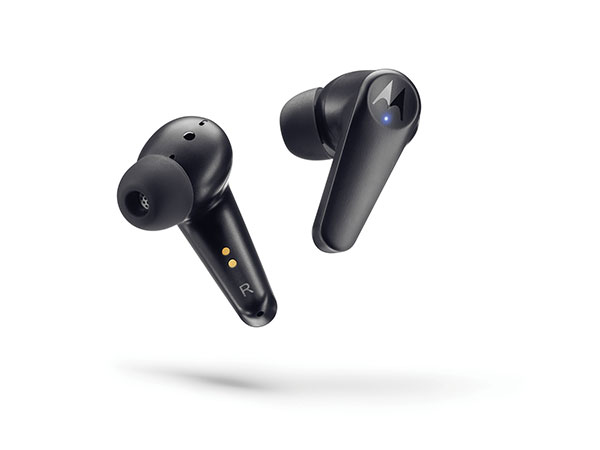
Listen and Learn
Whether students are listening to prerecorded lessons, immersing themselves in audiobooks or simply enjoying some favorite music while completing schoolwork, high-quality earbuds can help block out noise for maximum productivity. For example, the Moto Buds 600 ANC Wireless Earbuds feature Snapdragon Sound technology that delivers advanced wireless audio quality. A game changer for wireless audio, it eliminates the gap between wireless and wired connections for high-resolution music and synced entertainment.

Opt for Kid-Friendly Wearables
If a smartphone is a bit too advanced for your little learners, an age-appropriate smartwatch that keeps them connected may be a better fit. Empower kids to be kids with an option like the Snapdragon Wear 4100-powered Verizon Gizmo Watch 3 with a range of benefits from 4G LTE cellular connectivity to games and GPS-safe zones. This smartwatch is designed with safety and fun in mind without the distractions of a smartphone so you can have some peace of mind while keeping students focused in the classroom.

Keep In Touch During Schooldays
Hectic schedules during schooldays and workdays can leave parents feeling out of the loop. When your children are ready for a ride home or a practice, game or activity gets canceled, ensure you can be the first to know by keeping them connected with the OnePlus 11 5G powered by the Snapdragon 8 Gen 2 Mobile Platform. It combines power with effortless elegance and is driven by extreme hardware with Dolby Atmos Speakers, Dolby Vision, 80W SUPERVOOC Charging and 3rd Gen Hasselblad Camera for Mobile.
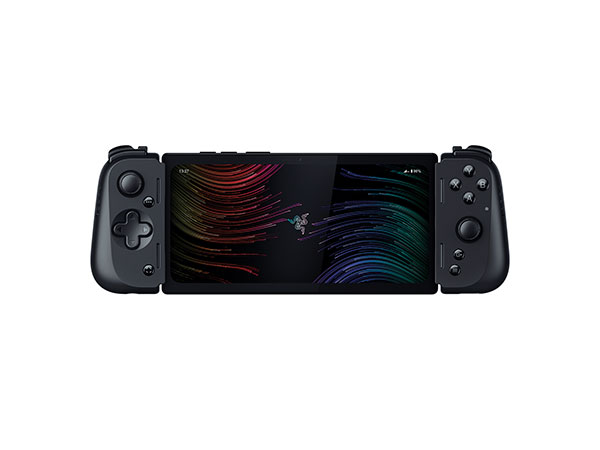
Reward Making the Grade
Custom-built to be the ultimate Android gaming handheld, the Razer Edge with the purpose-built Snapdragon G3x Gen 1 platform delivers unrivaled performance. Combined with a 144Hz AMOLED display for clarity at high speeds and a Kishi V2 Pro console-quality controller, it allows for sustained performance so users can game for hours with high-quality graphics and high frame rates. Specifically designed and optimized for gaming with an active-cooling fan, it unleashes high framerates over long play sessions.
Qualcomm
UPS impasse with union could deliver a costly strike, disrupting brick-and-mortar businesses as well as e-commerce

Talks between the International Brotherhood of Teamsters and UPS over a new contract fell apart on July 5, 2023. The union and the shipping and logistics company are blaming each other for the collapse, which occurred a few weeks after 97% of UPS’s Teamsters voted to strike if the Teamsters and UPS don’t reach an agreement by midnight on July 31.
Without a deal in place, more than 300,000 Teamsters will stop working on Aug. 1. It would mark the delivery service’s first strike since 1997.
The Conversation asked Jason Miller, a supply chain scholar at Michigan State University, to explain how likely it is that this will happen and what to expect if it does.

What are the reasons for this impending strike?
Before the talks collapsed, both sides had been negotiating extensively on a new five-year agreement that would cover about 340,000 unionized UPS workers.
The delivery company has agreed to some of the Teamsters’ demands, pledging to:
End a two-tiered wage system in which part-time workers earn an average of about US$5 per hour less than full-time workers;
Make Martin Luther King Jr. Day, the third Monday of January, a paid holiday;
Stop requiring UPS employees to work overtime hours on their days off;
Add fans and install air conditioning in many trucks to improve cooling.
The primary remaining sticking points concern part-time workers. The Teamsters dispute UPS’s claim that part-time workers earn an average of $20 per hour. Teamsters President Sean O’Brien instead says they’re paid “poverty wages.”
The Teamsters further want part-time workers to have earlier access to health insurance coverage and pension plans and a clearer pathway to full-time employment. The union also seeks to resolve safety and health concerns and “better pay for all workers,” as well as obtaining “stronger protections against managerial harassment.”
The impasse comes after two years in which UPS posted record profits. The company cleared $12.9 billion and $11.5 billion, respectively, in 2021 and 2022. The company nearly tripled its net income from the levels seen in 2018 and 2019 of $4.8 billion and $4.4 billion.
The Teamsters argue that these record profits mean UPS can afford to pay higher wages.
What should consumers expect?
If unionized UPS workers do go on strike, many U.S. consumers will surely fear delays in the delivery of their online purchases. In my view, that’s a reasonable concern, given that UPS handles roughly 25% of all U.S. package deliveries.
The 1997 strike, which lasted 16 days, took place when e-commerce was in its infancy. The Census Bureau only began to track that slice of the economy in 1999, when online shopping amounted to about 0.6% of all retail sales. Today, consumers spend about 15% of their shopping dollars on e-commerce purchases.
If a strike were to happen, UPS competitors, including FexEx Ground and the United States Postal Service, would likely be able to handle about 20% of UPS’s deliveries because the industry currently has some excess capacity.
That’s due to delivery workers clocking fewer hours per week today compared to the height of the COVID-19 pandemic. Parcel delivery demand peaked in 2021, when millions of Americans were still social distancing.
If a prolonged strike happens, UPS could lose up to 30% of its business, experts warn, as customers switch to rival services.
The risk of losing market share is leading many industry experts to believe that if a strike were to occur, it wouldn’t last long.
What about businesses?
Roughly 57.3% of the packages UPS delivers are shipped straight to consumers. The rest go to retailers and other businesses.
Based on my years of researching transportation operations and supply chain disruptions, I believe Americans should recognize that the impact of a UPS strike would stretch far beyond delayed delivery of everything from pet food to tennis rackets that they buy online.
A UPS strike could disrupt the availability of spare parts for cars and wholesale medical supplies, just to name a few essentials. Consumers will also find it harder to get clothing and shoes in stores, as retail locations are typically replenished by parcel carriers.
The supply chain for manufacturing computer and electronics products would probably be disrupted too, according to my analysis of data from the Census Bureau and the Bureau of Transportation Statistics that tracks how different industries transport products to their customers. Farmers and construction companies trying to get spare parts for heavy equipment would see delays in those shipments, which might result in downtime that costs tens if not hundreds of thousands of dollars.
Consequently, a strike would leave many businesses scrambling to fulfill customers’ orders, which may force them to spend more money on higher-priced air freight shipping.
Even a 10-day strike could cost the U.S. economy an estimated $7.1 billion , according to Anderson Economic Group – a research firm – making it potentially the costliest strike in U.S. history. These costs stem from the 340,000 striking workers losing an estimated $1.1 billion in wages and UPS losing $816 million in earnings. The balance of this estimate would result from the disruptions incurred by UPS customers.
What do you think will happen?
Unlike the threatened railroad strikes of 2022, there is no system in place for the federal government to prevent a UPS strike. On that occasion, Congress had the option of intervening, but a deal was reached before the government had to step in.
However, it seems likely that there will be calls for the White House to get both parties back to the negotiating table.
Given that both the Teamsters and UPS have an incentive to not see the company lose customers to rival shipping operations, I believe that they may reach a deal soon enough to avoid a costly and disruptive strike. Consistent with this, UPS announced on July 19, 2023, that it and the Teamsters will return to the negotiating table before their July 31 deadline.
Jason Miller, Associate Professor of Supply Chain Management, Michigan State University
This article is republished from The Conversation under a Creative Commons license.
Tony Bennett: the timeless visionary who, with a nod to America’s musical heritage, embraced the future
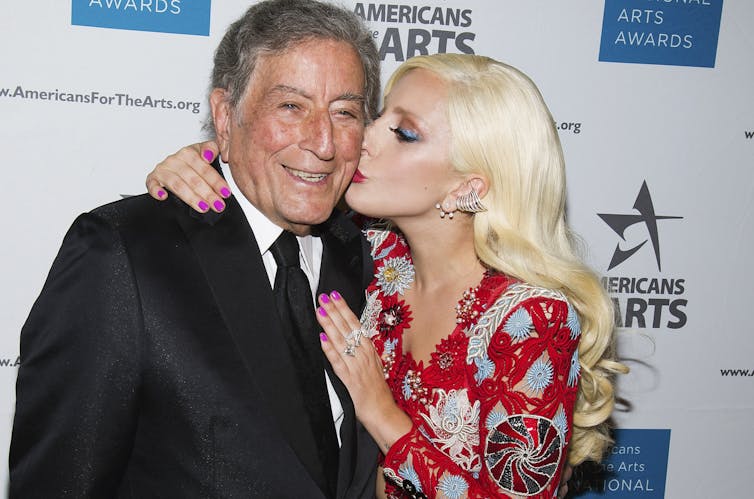
In the history of American popular music, there have been few luminaries as enduring and innovative as Tony Bennett.
With a career that spanned almost 80 years, Bennett’s smooth tones, unique phrasing and visionary musical collaborations left an indelible mark on vocal jazz and the recording industry as a whole.
That his death at the age of 96 on July 21, 2023, was mourned by artists as varied as Keith Urban, Ozzy Osbourne and Harry Connick Jr. should come as no surprise. Yes, Bennett was a jazz crooner. But if his voice was always a constant – even late into his 80s, way past an age when most other singers have seen their vocal abilities diminish – then his embrace of the contemporary was every bit a facet of Bennett’s appeal.
Vocal innovator
Bennett’s journey is a testament to the power of daring innovation.
From the early days of his career in the 1950s to his final recordings in the early 2020s, he fearlessly explored new musical territories, revolutionizing vocal jazz and captivating audiences across generations.
His vocal style and phrasing were distinctive and set him apart from other artists of his time. He utilized a delayed or “laid-back” approach to falling on the note, a technique known as “rubato.” This created a sense of anticipation in his phrasing, adding an element of surprise to his performances. Through Bennett’s skilled use of rubato, he was able to play with the tempo and rhythm of a song, bending and stretching musical phrases to evoke a range of emotions. This subtle manipulation of timing gave his songs a natural and conversational quality, making listeners feel as though he was intimately sharing his stories with them.
Armed with this silky, playful voice, Bennett found fame fairly early on in his career, delivering jazz standards alongside the likes of Mel Tormé and Nat King Cole. By the mid-1960s, he was being touted by Frank Sinatra as “the best singer in the business.”
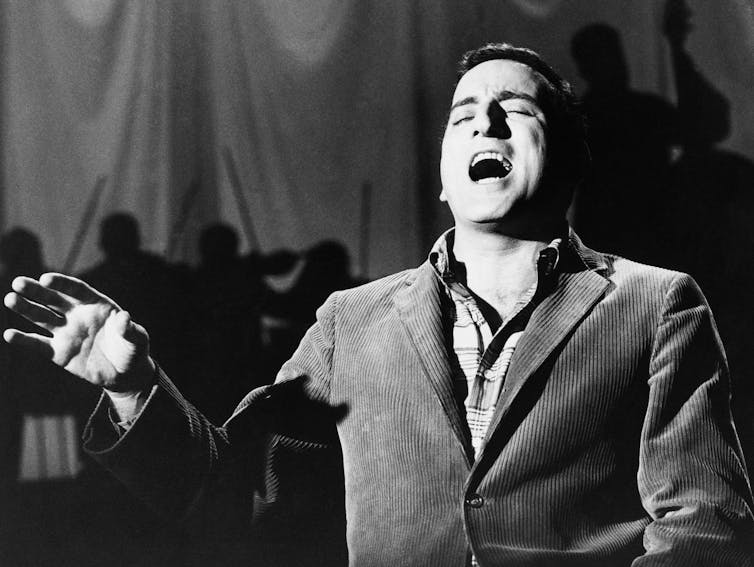
But his musical style fell out of fashion in the 1970s – a lean period during which Bennett almost succumbed to a drug overdose. Then, in the 1990s, Bennett found a new audience and set off a series of collaborations with contemporary musical stars that would become the standard for his later career.
No genre of artistry was deemed off-limits for Bennett. “Duets: An American Classic,” released to coincide with his 80th birthday in 2006, saw collaborations with country stars such as k.d. lang and the Dixie Chicks – now known as the Chicks – and soul legend Stevie Wonder, alongside kindred jazz spirits such as Diana Krall. “Duets II,” a 2011 follow-up, saw further explorations with the likes of Aretha Franklin, Queen Latifah, Willie Nelson and Amy Winehouse, in what would become the British singer’s last recording.
But his cross-generational, cross-genre and cross-cultural appeal is perhaps best exemplified by his collaborations with Lady Gaga, first on the 2014 Grammy-winning album “Cheek to Cheek.” The recording brought together two artists from different generations, genres and backgrounds, uniting them in a harmonious celebration of jazz classics. The collaboration not only showcased each one’s vocal prowess, but also sent a powerful message about the unifying nature of music.
Lady Gaga, a pop artist with avant-garde leanings, might have seemed an unlikely partner for Bennett, the quintessential jazz crooner. Yet their musical chemistry and mutual admiration resulted in an album that mesmerized audiences worldwide. “Cheek to Cheek” effortlessly transcended musical boundaries, while the duo’s magnetic stage presence and undeniable talent enchanted listeners.
The successful fusion of jazz and pop encouraged artists to experiment beyond traditional boundaries, leading to more cross-genre projects across the industry – proving that such projects could go beyond one-off novelties, and be profitable at that.
Timeless artistry
Bennett’s embrace of contemporary artists did not mean that he abandoned his own musical self. By blending traditional jazz with contemporary elements, he managed to captivate audiences across generations, appealing to both longtime fans and new listeners.
One key aspect of Bennett’s success was his ability to embody the sentiment of old America, reminiscent of artists like Sinatra, Billie Holiday and Louis Armstrong, while infusing contemporary nuances that resonated with the human condition of a more modern era. His approach to music captured both the essence and struggle of America, giving his songs a timeless and universal appeal. Moreover, his voice conveyed familiarity and comfort, akin to listening to a beloved uncle.
Bennett’s albums stood out not only for his soulful voice and impeccable delivery but also for the way he drew others from varied musical backgrounds into his world of jazz sensibilities. As a producer, he recognized the importance of nurturing creativity and bringing out the best in artists.
Meanwhile, Bennett’s approach to evolving his own sound while preserving its essence sets him apart as an artist. Fearless in his pursuit of innovation, he delved into contemporary musical elements and collaborated with producers to infuse new sonic dimensions into his later albums. The result drew listeners into an intimate and immersive, concert-like acoustic journey.
Depth of emotion
The greats in music have an ability to speak to the human experience. And either in collaboration with others or on his own, Bennett was able to achieve this time and time again.
His albums were successful not only due to their technical brilliance and musicality but also because Bennett’s voice conveyed a depth of emotion that transcended barriers of time and culture, touching the hearts of listeners from various backgrounds. There was a universality in his music that made him a beloved and revered artist across the globe.
Bennett’s life spanned decades of societal upheavals in the United States. But in his music, listeners could always find beauty in challenging times. And as the 20th- and 21st-century American music industry went through its own revolutions, Bennett’s artistic evolution mirrored the changes, cementing his place as a music icon who defies the boundaries of time and trends.
Jose Valentino Ruiz, Ph.D., D.Min., Program Director of Music Business & Entrepreneurship, University of Florida
This article is republished from The Conversation under a Creative Commons license.
Friday, July 21, 2023
Smart Solutions for School
Must-have essentials for back-to-school season
(Family Features) With school bells ringing for students of all ages, it’s important to make sure your student has all the necessities to be successful this year.
While that often means running from store to store in search of supplies, stylish clothes and other essentials, these top picks for securing valuables, decorating dorm rooms, planning out schedules, getting necessary nutrition and staying hydrated can help ensure your student is geared up for success in the classroom and beyond.
Find more back-to-school essentials and tips for success in the classroom at eLivingtoday.com.
Protect New Purchases on Campus
A new school year brings plenty of excitement, but it can also be stressful for students moving away from home who need to safeguard valuables like tablets, smartphones, passports, or an emergency credit card. To help alleviate back-to-school worries, SentrySafe, a leading name in fire-resistant and security storage for more than 90 years, offers solutions to provide peace of mind for parents and students. An affordable, convenient, and fireproof option, the 1200 Fire Chest protects items against fires up to 1,500 F for 30 minutes. It also features a built-in key lock and convenient handle for added security and simplified transport. Find more back-to-school security solutions at sentrysafe.com.
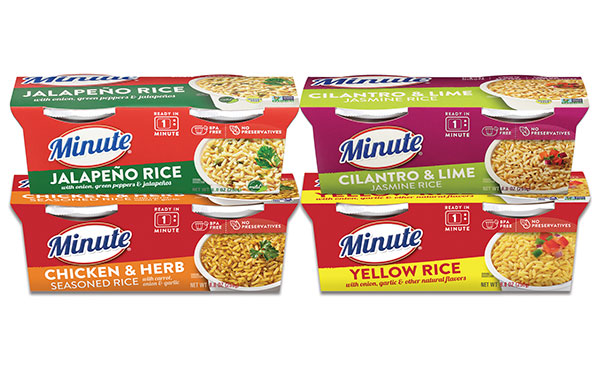
Quick and Easy Meals That Deserve an A+
Keeping weeknight dinners and school lunches simple means more time for family and less stress during the week. Cook up quick and easy weeknight dinners, school lunches or on-the-go snacks with Minute Rice Cups. Ready in only 1 minute, the BPA-free cups are available in a variety of flavors such as Chicken & Herb, Cilantro & Lime, Jalapeno and more. Visit MinuteRice.com to get meal ideas today.

Make Organization Personal
Help your student keep notes, study times and test dates organized with a quality planner that also showcases his or her personality. Available in a myriad of trendy colors and patterns – like polka dots, stripes or chevron – as well as various calendar layouts like daily, weekly or monthly, the right planner can help students of all ages stay on track, achieve goals and preserve memories in one stylish and organized place.

Sleep in Style
Where a student sleeps may be one of the last things on his or her mind when thinking about the excitement that awaits in college but getting plenty of sleep is key to success. Amp the appeal of the dorm-issue mattress with stylish and comfy bedding that reflects your personality. Look for quality threads you can snuggle into, and coordinate with pillows to make your bed a cozy place to sit and study by day.
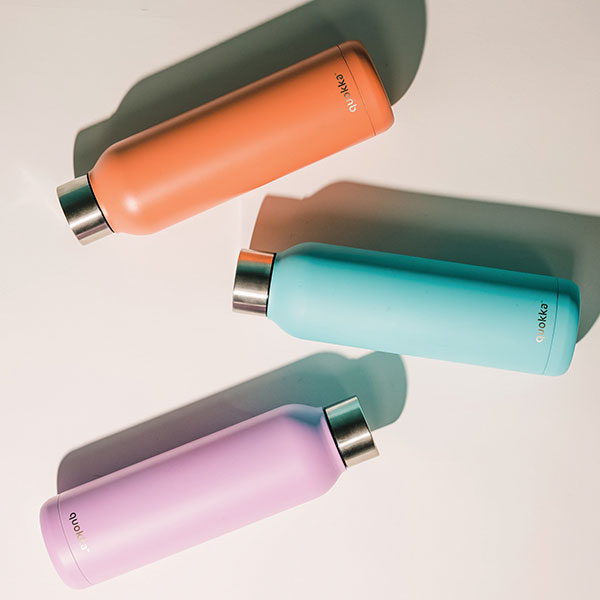
Take H2O on the Go
A durable reusable water bottle can make your back-to-school routine even easier. With a variety of sizes and styles available in a multitude of colors and designs, there’s almost certain to be an option for students of all ages and activity levels. Look for durable, leak-proof stainless steel or hard plastic options that offer different lid styles, including wide-opening or those with retractable straws, to make hydrating on the walk between classes a breeze.
SentrySafe
Minute Rice



